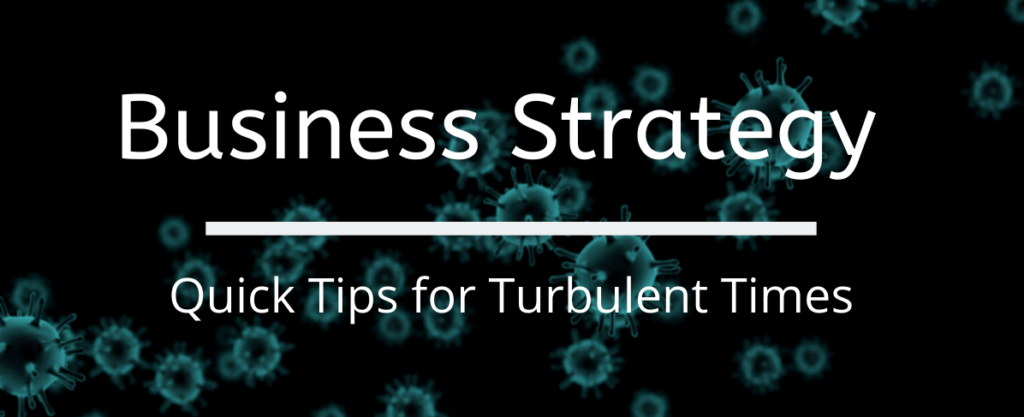How to Reopen Your Business as Safely as Possible During COVID-19
As we reach the peak of the coronavirus pandemic, most businesses are planning for how to reopen safely during COVID-19. Even as we reach the peak, it will be important to wait several weeks thereafter to allow the diminished risk to take hold. Only then will we be able to safely return to our new normal.
As doctors providing patient care during this pandemic, we are also counseling our corporate clients throughout the country on how to safely reopen their businesses, while at the same time determining the safest way to reopen our own business. Knowing there’s a greater need in the community for this advice, we’re happy to share it with everyone who is attempting to balance safety with economic reality.
When reopening your business, plan with the longer-term in mind. Be prepared to implement strategies that will be in place for many months and not just a couple of weeks. It is likely that the COVID-19 risk will remain high for at least the next year until a vaccine can be developed and distributed on a large scale.
We will get better at treating the virus over time, which will help, but it will take a continued commitment to social distancing guidelines and strategies that reduce contagion while at the office to limit the risk to your employees and your business as much as possible. The alternative is dealing with a viral outbreak at your office, and no one wants that.
When thinking about reopening, you should focus on three things:
- deciding which employees to bring back to the office first,
- promoting and practicing social distancing at the office, and
- encouraging healthy lifestyles from all employees.
(1) Bring Only the Most Essential, Most Required, and Least-Risky Employees Back First
With time, employees will slowly return to the workplace. But be careful about the rate and staging which people come back first. This process needs to be slow and methodical to ensure no employee is put at risk and all employees understand their role in maintaining as safe an environment as possible. Base your decisions on three factors:
- The individual health risk of each employee based on age and health status. COVID-19 impacts older individuals (over 60) and those with underlying health conditions (obesity, hypertension, diabetes, pulmonary disease, asthma, and smokers) the most. These employees, along with those that are immunocompromised, should continue to work at home. It isn’t worth the risk.
- How essential their job is to be at the workplace instead of at home. One post-COVID-19 development will be an increase in full-time remote workers. In the immediate future though, while the virus lingers, don’t bring employees back that can do their job just as well from home, even if they aren’t at a higher risk due to their age or health status. With the virus still hanging around, limiting close contact will continue to be an effective strategy, and it’s easier to do that with fewer people overall at the office.
- How essential they are to your business. Are they are C-Suite executive, a vital salesperson, or an individual filling an indispensable role? Certain roles are just more effective in the office. But you should only bring these individuals back after also considering their age and health status and whether they can work from home. Your 60-year-old CFO might be very important to your business. But if they are performing just fine at home, let them continue.
(2) Continue Practicing Social Distancing, and Then Some, as Much as Possible
With employees back at the office, it will be critical to continue practicing basic social distancing guidelines, while also implementing specific workplace policies to limit the risk to your employees. Your employees will go from spending most of the day around the same few people at home to spending most of the day around more people and then dispersing back home every night. If not handled properly, your office could become a petri dish for viral contamination and put not only your employees at risk but also their families. Some suggestions:
- Keep 6-10 feet apart as much as possible. Don’t linger in break rooms or around someone’s desk.
- If you have private offices, recommend employees close the door while in the office. While in public or shared areas including hallways, always have masks on.
- Consider rearranging communal workspaces to separate employees from sitting too close to each other.
- Limit in-person meetings at much as possible. If absolutely necessary, be sure to sit 6-10 feet apart.
- Encourage use of instant messaging technology, email, or a good old fashioned phone call, as opposed to walking down the hall to pop into someone’s office for a quick question.
- Wear a face mask at all times – either a surgical mask or a homemade cloth mask. Keep N95 masks for healthcare workers due to continued PPE shortages for those who need this higher level of protection the most.
- Encourage employees to wash their hands or use hand sanitizer whenever they think about it.
- Keep public doors, including perimeter facility doors and bathroom doors, propped open if possible.
- When your employees go home, encourage them to put clothes and cloth masks into the laundry immediately. Leave shoes outside and spray them down.
- Encourage a culture of community where you are all in it together. Wear your masks to protect everyone else too, not just yourself.
Some employers are considering more extreme measures like required temperature checks and antibody testing or hiring a nurse to check symptoms at the door. These are expensive measures for any business, particularly small businesses, and they are not foolproof. The contagion period of the virus can begin as early 2-3 days prior to any symptoms appearing, so if one of your employees spikes a fever, it may just tell you that your business has been exposed for the last 48 hours. And you can have the antibodies, but not necessarily be immune to getting COVID-19 again or a different version of it as the virus mutates with time.
That is why it’s so important to wear a mask, wash your hands, limit unnecessary interactions, and stay as far apart as possible.
(3) Double Down on Your Wellness Program. Now is the Time to Get Healthier
Never has there been a better time, or a more important time, to double down on any wellness initiatives and encourage your employees to get healthier. We likely have a full year, at least, before a vaccine is developed.
Improving our health – eating healthier, exercising more, sleeping better – helps enhance the immune system. By focusing on living a healthy lifestyle, we improve the chances that we will be strong enough to fight the virus if we contract it before a vaccine is developed. Given that some estimates indicate between 50%-80% of the world’s population will eventually be exposed to the virus, it’s critical that we do everything possible in advance to give our body the tools it needs to ward the virus off.
That might involve restarting a corporate wellness program administered by HR. It must just involve encouraging all employees to take a break and go for a walk outside at least once per day. It might even involve implementing an executive health program with health coaching at your company using a resource like PartnerMD.
But at the very least, it means creating a culture that that promotes getting our weight down, working on nutrition habits and blood sugar levels, stopping smoking, and moving more. By helping your employees improve their health, you’ll be helping protect your business as well.
About the Authors
In addition to treating patients as an internal medicine physician, Dr. Steven Bishop serves as Director of Wellness at PartnerMD.
Dr. David Pong is Director of Executive Health at PartnerMD.
Editors Note: Content provided by PartnerMD, a Sponsor of Virginia Council of CEOs.
COVID-19 Strategy: Why Talking to Your Banker Now Is Important

You heard it here first: Your fears and concerns are valid, and the anxiety and stress about keeping your business afloat during the COVID-19 pandemic is legitimate and understandable.
If there were easy answers, or answers at all right now, you would most likely be getting them from all different angles. The entire country is in a state of limbo, and not many people thrive on uncertainty especially when it relates to the well-being of employees, businesses, and families.
How is it possible that there is so much demand for your product or service at the moment, but you are not even able to sell it? Though bankers are not therapists, it is appropriate to tell you that IT IS OK TO FEEL ANXIOUS RIGHT NOW!
So what is the best approach to deal with your banking partner and anxieties around the health of your company during a time like this? Below are a few points that might help you work through this time with your banker:
#1) Let’s talk!
Very simply, pick up the phone and call your banker (who probably should have proactively already called you by now anyway). The bank wants to hear from you.
As bankers, we often believe that we know exactly what is going on in the market. And while we are sometimes correct, we may not know exactly what is going on with YOUR market. We want to hear about your struggles, concerns, and outlook.
And make sure to interview your banker as well. Like you, our worlds are changing very rapidly, and guidance from Federal regulators is pouring in daily. It is important for you to have an honest conversation with your banker about their desire to continue to work through customer cash flow challenges, the bank’s ability to handle a downturn, and if new lending is a possibility. Though answers might change quickly, continuing to have an honest relationship may help to assuage any fears that both parties are having.
#2) Plan
With the ever-changing environment in which we are living today, this might be the hardest action item. Determining a plan with so many unanswered questions can feel like trying to hit a moving target, but it is important to do the best you can.
Plans may include such things as understanding how to reduce costs if revenues fall, liquidating assets to maintain cash in an effort to fund operations, or identifying capital sources that will negate incurred losses.
From a banking standpoint, it could be beneficial to speak with your banker about the opportunity to temporarily move to interest-only monthly payments that relieve debt service obligations in the near-term, deferred payments for a specified period of time, or interest rate relief for an interim timeframe. Many well-capitalized banks are willing and able to work with the customers that are feeling the pains of the COVID-19 outbreak, and Federal regulators are currently encouraging collaboration between banks and businesses to help borrowers adjust to changes.
#3) Find alternatives
Both small and large business owners are in the process of searching for alternatives to supplement declining revenues related to the pandemic. From automakers manufacturing necessary ventilators to restaurants moving to takeout menus and even breweries and distilleries producing hand sanitizer, businesses are pivoting to alternative opportunistic revenue streams.
This might be the right time to find an alternative for your business and your workforce to further operations. From a financing standpoint, it could be a good time to visit the Small Business Administration’s website (www.sba.gov) to understand lending options that are not readily available by your bank but can provide temporary, flexible financing relief.
#4) Let’s talk (again)!
Keep communicating with your banker. Just because you had an initial call or meeting does not mean that you have to stop there. As the slowdown continues, your banker will be very interested in how you are handling the downturn and, hopefully, how the bank can help. It will also be important for you to hear bank and regulatory updates as they are available.
There may not seem like easy answers to all of our questions right now, but try to remember that your financial institution is a partner in your company. While we share in your present anxieties and uncertainties, many bankers want to work with business partners to weather the economic storm related to COVID-19.
Like us, understand that your stress is real but that frequent communication with your banker can help to establish the right plan for withstanding the pandemic while setting you up for future viability. Banks and businesses should always remember that we cannot win without each other.

Matt Paciocco is a Senior Vice President, Commercial Banker with Virginia Commonwealth Bank (VCB). Matt is passionate about working in a community bank that enables him to build strong relationships with his business customers and the surrounding communities. Matt has spent the last 15 years specializing in commercial banking and has positioned himself as a leading community banker in Richmond.
Editor’s note: Content provided by Virginia Commonwealth Bank (VCB). VCB is a Sponsor of VA Council of CEOs.
Learning How to Operate in Our New Business World

During the COVID-19 global health crisis, we are forced to adapt to a new way of life. Here’s how to start thinking strategically to best navigate through these uncharted waters.
DEVELOP A MULTI-LAYERED FINANCIAL PLAN.
You need to understand the financial implications and to act quickly. What happens if business reduction lasts for weeks? Or longer? Consider various “what-if” scenarios. Inquire about your business interruption insurance. Do you have an existing policy with dread disease coverage? Be sure to review the following:
- Expenses – by line item and due date
- Cash flow – How much cash do you have on hand? How much do you need?
- Accounts receivable and collection efforts
- Accounts payable — be in communication with your vendors regarding delays
BEWARE OF HACKERS AND CONSIDER CYBER SECURITY INSURANCE.
With companies quickly moving to remote work environments, hackers are aggressively looking to exploit any flaws. Be diligent and don’t click on links from unknown sources. It is not too late to talk to your broker about getting insurance for cyber security or social engineering policies.
REFER TO YOUR COMPANY “EMERGENCY OR DISASTER RECOVERY PLANS”.
This should include policies regarding:
- Remote work.
- Who is “essential personnel” to adequately keep the business running.
- Paid time off and how it can be handled. Employees can file for unemployment if their office is closed and they are not getting paid time off. They do not have to be in a terminated status to file for unemployment.
- Allowing employees to stay home if they are scared, at-risk or uncomfortable at work.
REMOTE WORK IS DIFFERENT FROM OFFICE WORK.
Employees need to set their own schedules and be able to deal with different distractions (e.g. kids, phone calls, etc.). Don’t underestimate the change and potential impact. Clearly communicate who employees should call with questions or issues, during and after work hours.
THINK CREATIVELY.
In these uncertain times, you may need to be creative. This will mean different things for different companies. Consider unique ways you can make your business stronger.
BRING THE WORK YOU DO TO THE DIGITAL FRONTIER.
How can your business adapt to offer services digitally? For example, on-line teaching classes, or offering webinars. The goal is to keep your business top of mind.
CONSIDER CLOUD ACCOUNTING SYSTEMS.
To allow for accounting data to be easily accessible, consider cloud-based accounting systems. In cloud computing, users access software applications remotely though the Internet. Remember to ensure adequate security protection.
KEEP WORKING.
Unless you have been asked not to work at all (e.g., some non-exempt positions), keep working, most likely from home. Utilize smart tools and practice healthy habits. Limit social engagement and leverage technology.
REMEMBER THE BASICS.
Password protection and current anti-virus systems are critical for remote devices, even if they are owned by the employee and not controlled by the company.
Companies need to consider whether remote users will be able to print or store any confidential information on their laptops or Home PCs. Tools are available that can prevent downloading or printing of any information from personal devices.
EMBRACE SCREEN SHARING, AUDIO/VIDEO CONFERENCING, AND REMOTE ACCESS SOFTWARE.
There are many software options to choose from; some are paid services, but several are free. Here are examples of systems that are commonly used:
- Zoom
- Microsoft Teams
- Skype
- Google Hangouts
- TeamViewer
- Join.me
- GoToMeeting
- Web Ex
- Slack
- VPN Connections
- UBER Conference
- Chrome Remote Desktop
- Windows Remote Desktop
About Warren Whitney
Warren Whitney is a results-oriented management consulting firm based in Richmond, Virginia who is dedicated to serving privately held and nonprofit organizations in four areas: Strategy, Finance/Accounting, HR, and IT.
Editors note: Image and content provided by Warren Whitney. This post article was originally posted here. Warren Whitney is a Sponsor of Virginia Council of CEOs.
Quick Tips for Successfully Managing Turbulent Times

These are unprecedented and turbulent times. COVID-19 will pass and organizations will need to have the right plans and people in place to continue to survive and thrive. Focus on these four things when navigating crisis times in business:
1) Strategy
- Don’t panic, but don’t ignore what’s going on around you – Writing down the things that have changed for you and taking your best estimate at the dollar magnitude really helps put things into perspective. Look at added costs, declines in revenue and the value of assets.
- Communicate, communicate, communicate – Be present and make sure you do everything possible to eliminate surprises with your stakeholders. You don’t have to have all the answers but being silent is not good.
- Find ways to play some offense – Are there things you can do to change your delivery method or go-to-market strategy to buy time? Are there ways to create a temporary stand still? Where can you pivot? Think outside the norms.
2) Finance & Accounting
- Cash is king – Know your liquidity position, no matter what! Map out your cash flows for the next 30-60-90 days. Find ways to reel in what you are owed and manage what you pay out.
- Size up your resources – Especially the resources that are available to you from outside your own balance sheet – think insurance coverages, stimulus, federal programs, off-balance-sheet resources, and relationships.
3) People & Recruiting
- A very wise business woman said “Cash might be King, but your people are gold. Treat them really well, especially in a crisis.” Always treat them with respect and don’t hesitate to ask them to rise to the occasion.
- Keep an open dialogue, consistently communicating with your people both current and potential future teammates.
- If you are recruiting, acknowledge that you need to make an adjustment to the hiring process. At Fahrenheit, we have helped our clients outline what the new process and timeline might be, while also communicating the need to remain flexible given the current uncertainty surrounding COVID-19.
- Mimic your traditional hiring process in a virtual environment as close as possible. Use video conferencing to engage candidates face to face allowing you to evaluate candidates almost as if you were in the same room.
If social distancing is keeping candidates from touring the office or facility, make a short video. Candidates will appreciate being able to virtually connect to your working space. COVID-19 will pass and organizations will need to have the right people on board. Engage candidates even if you have to delay a final decision.
4) Human Resources
- Stay informed – The health and safety of your workforce comes first. Staying informed from reliable sources like CDC, WHO, and your own state’s website is the best way to prepare your team.
- Form a Rapid Response Team (RRT) – Pull key decision makers together regularly to make rapid assessments and quick decisions using the best available information. These teams keep things moving by shortening decision making and communication cycles.
- Communicate frequently – Fear and uncertainty are the enemy. Employees are or will be anxious; the antidote to uncertainty is constant communication.
- Plan for changes in the workforce – Work with the CEO and CFO to identify business triggers, such as drop in sales of 10%, 25% and 50%, and develop staffing plans to address each environmental change. Consider redeployment, furlough, layoff and termination as workforce management tools. Execute these plans thoughtfully.
- Think about the future – In the midst of the crisis, it’s difficult to think about, but recovery will happen. Think about how changes today impact work tomorrow.

Chip Bowman is a Managing Director responsible for developing Fahrenheit’s business in Virginia and providing clients with customized strategies for solving their challenges and growing their business. He is skilled in leading operations and finance functions across numerous public and private industries including banking, healthcare, family business, education, manufacturing, and real estate development. He has a demonstrated ability to drive growth based on strategic vision and management of daily operations through process improvement, performance management, systems building, financial initiatives, and policy design and implementation. Chip also has experience in turnaround situations for middle market clients.
EDITOR’S NOTE: Image and content provided by Fahrenheit Advisors. Fahrenheit Advisors is a Sponsor of Virginia Council of CEOs.
COVID-19 UPDATE: Board Action and Next Steps

Dear VACEOs Community,
Your Board of Directors met in a called meeting via videoconference. I shared with them what I am hearing from many of our Roundtables and Forums. Most groups are meeting more frequently for shorter timeframes and have found this support to be vital.
The board and I are very clear on our highest priority. That is to continue to serve our mission (connecting CEOs for learning and growth) by facilitating learning and connection for our members and sponsors — immediately and in any way we can.
Here are some of the things we are working on to serve you:
- CEO Retreat. We are working to shift the delivery of our content and speakers from our canceled Retreat to a virtual setting. We anticipate this will begin in early April and continue through the month. Our goal is to provide learning that is relevant and helpful to you now.
- Serving One Another. We will immediately begin sharing content, product, and service offerings from sponsors and members with the entire VACEOs community. Expect to stretch the bounds of our normal Safe Haven “no sell” culture. These are not normal times. Look for a separate email about that next week, but don’t hesitate to email info@vaceos.org if you have something to offer or share.
- Taking Roundtables & Forums Virtual. We have already been communicating with group leaders offering help on convening their peer groups via videoconference. Contact info@vaceos.org to get sample virtual meeting agendas and guidelines.
- Flash Roundtables. We will offer regular ad hoc / Flash Roundtables to connect members who do not have a regular group. This may lead to forming new “virtual roundtables.” We will need facilitators for Flash Roundtables. Email us to volunteer.
- Connecting. We will continue to find other ways to connect members for learning, support and social connection.
Scot McRoberts, Executive Director, VACEOs
These are trying times, especially for leaders. I know that we will all rise to the challenge. And I am optimistic because we are better equipped than most because of the power of our peer community. Please reach out if we can help in any way.
Forward!
 Scot McRoberts
Scot McRoberts
Executive Director
Virginia Council of CEOs
scot@vaceos.org





Recent Comments